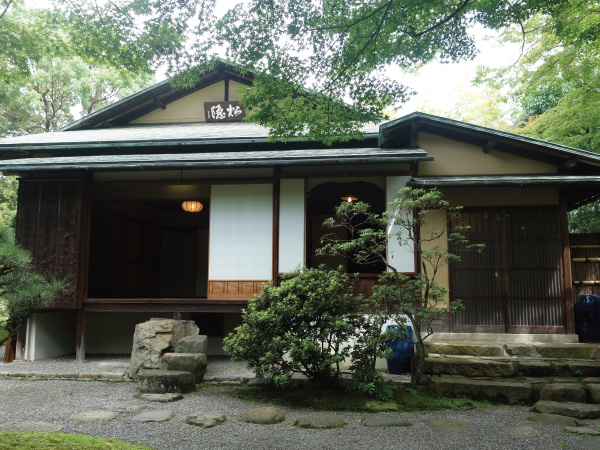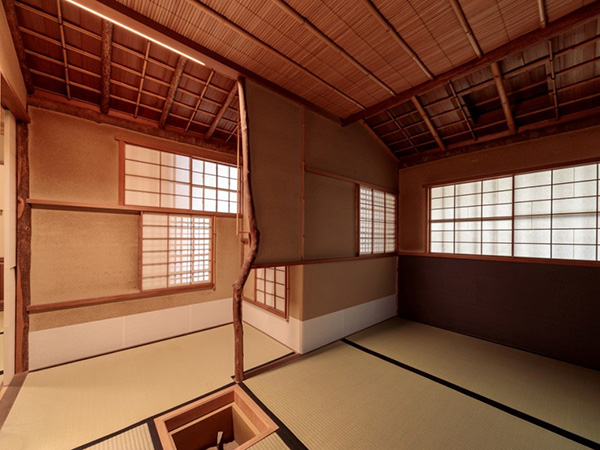Shoin Tea House
- Shoin Tea House
- Inner Tea House
The Shoin tea house is named after pine trees, considered an auspicious symbol
because they retain their green foliage in the cold winter, staying strong and resilient. The
building contains a replica of the tea room from a unique tea house called Kan’unken (“the tea house
floating in the clouds”) that once stood in Takimotobo Temple on Mt. Otokoyama. The use of tall
posts supporting the original Kan’unken on the mountainside made it seem to be floating in midair.
The tea room, raised seven meters above the slope, and the drawing room offered a panorama of Yawata
and Kyoto beyond.
It is said that the daimyo Kobori Enshu (1579–1647), a famed tea master and
landscape architect, designed Kan’unken for his friend Shokado Shojo (1584–1639), then the chief
abbot of Takimotobo. The tea house was lost to fire in 1773, but historic building plans served as
the basis for this reconstruction.
Shoin is the largest of the three tea houses in the outer part of the Shokado
Garden. The building has an entranceway, two tea rooms, and spaces between for preparation and
storage of tea utensils. Practitioners of chanoyu use this tea house to hold events and give
lessons.



